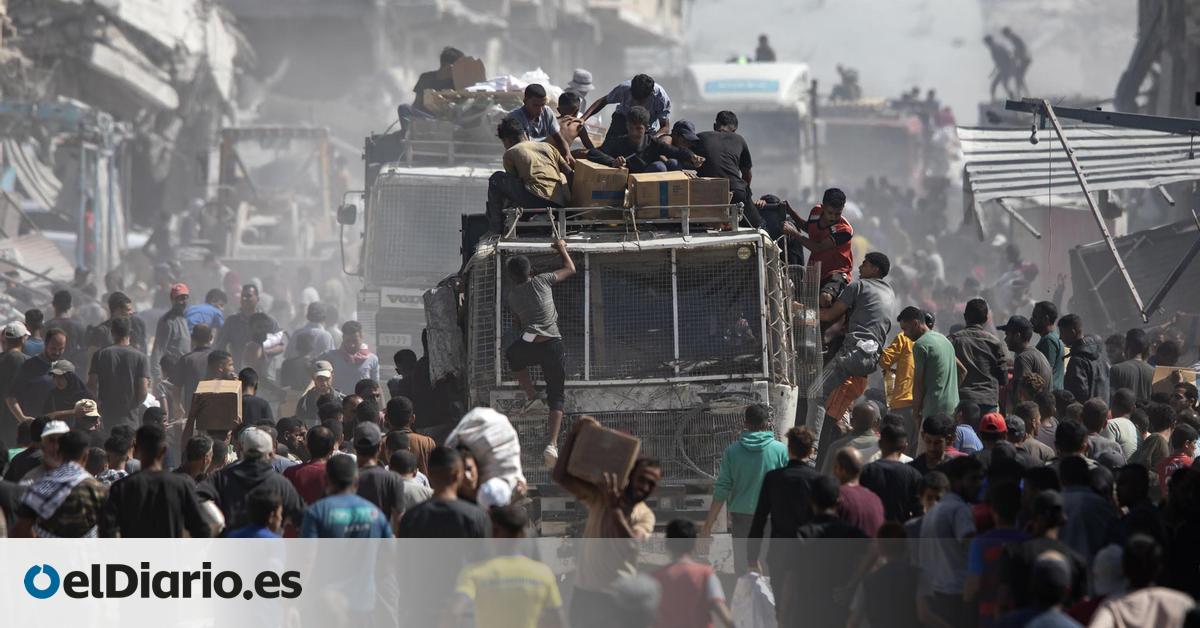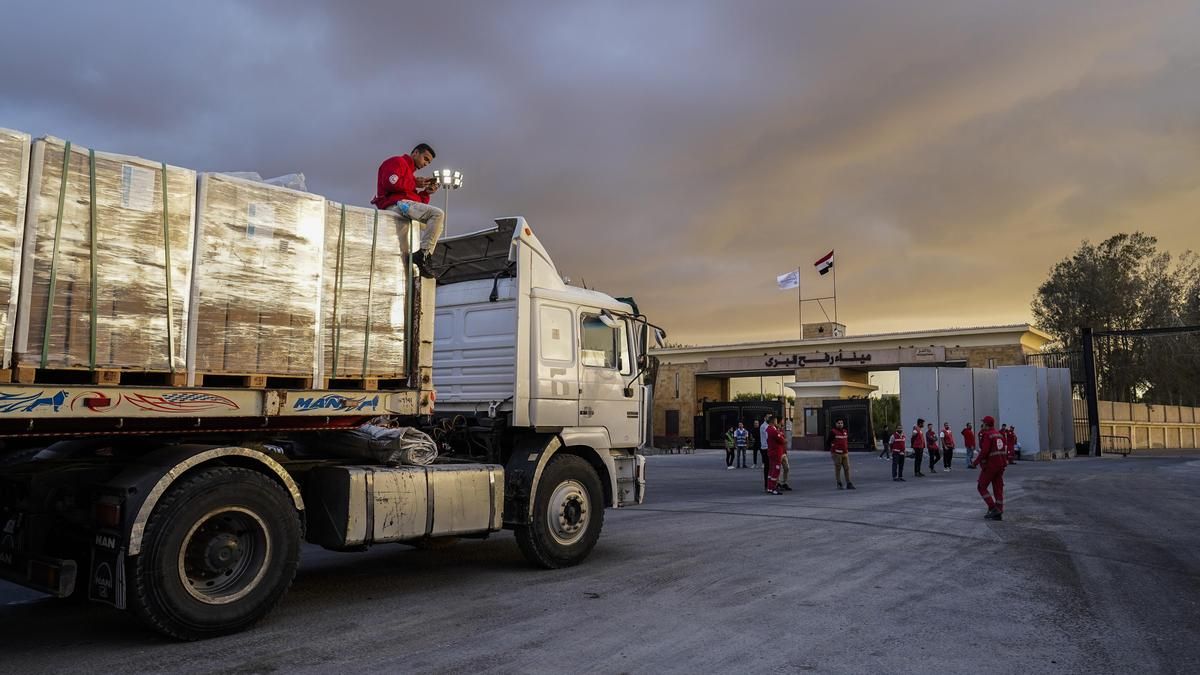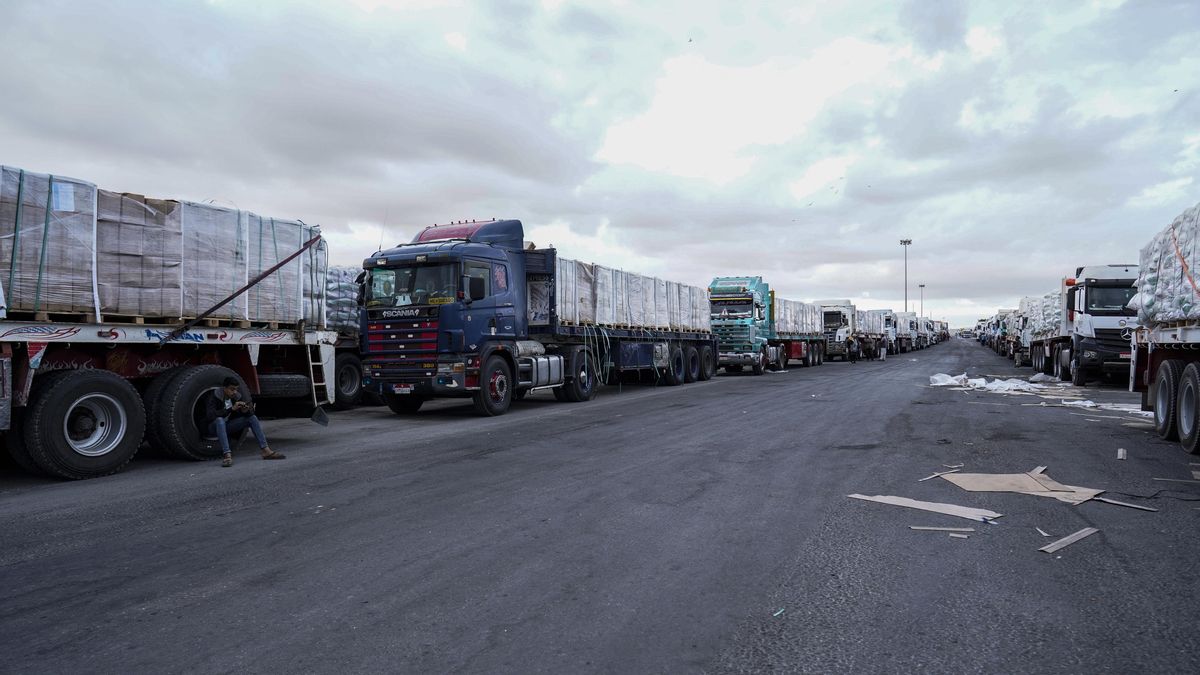
Hundreds of trucks with humanitarian aid began entering the Gaza Strip from Egypt this Sunday, after months of Israeli blockade and in accordance with the first part of the ceasefire plan agreed between Israel and Hamas, which came into force last Friday.
Long queues of trucks with food and supplies are at the Rafah crossing, on the border between Egypt and Gaza, waiting to enter the Strip through the Kerem Shalom and al Awja crossings, controlled by Israel, according to the EFE agency and the Egyptian television channel Al Qahera News.
The media, close to the intelligence services of the North African country, assures that throughout the day some 400 trucks loaded with different types of aid are expected to enter Gaza according to the agreement. It has also stressed that this is “the largest amount of aid that enters the Palestinian enclave since the beginning of the crisis,” and explains that, in addition to those that will enter today, “queues of trucks wait on a road up to five kilometers long.” long” in Rafah to be sent to Al Awja or Kerem Shalom.

In addition to these vehicles, each loaded with dozens of tons of food and medical supplies, several tankers with fuel have been seen in the Rafah area and were preparing to head towards the border crossings.
Under the agreement, reached last Wednesday in Egypt, Israel will allow the entry daily of up to 600 aid trucks operated by the UN, authorized international organizations, the private sector and donor countries.
The Ministry of Health of the Gaza Strip requested this morning an “urgent” response to introduce the necessary medical supplies into the Palestinian enclave. In a statement, the Gazan health authorities warned that thousands of patients and injured people need adequate places to receive medical care “urgently”, which is why they stressed that strengthening the hospitals that still operate in the Strip “is a top priority.”
“We cannot wait any longer,” they noted, and also added that the interruption of specialized and diagnostic services “aggravates the health situation and prevents complex surgical interventions.”

The ceasefire agreement and start of the first phase of US President Donald Trump’s plan for the Gaza Strip came into effect this Friday at noon local time, after the withdrawal of Israeli troops from Gaza cities.
Meanwhile, this Sunday, the Gaza Humanitarian Foundation (GHF), the American organization that has been in charge of distributing food in the Strip since May, by order of Israel, with a controversial method that has caused hundreds of deaths, has abandoned at least one of its distribution points in the Palestinian territory, according to EFE on the ground, something that the organization attributes to a “temporary closure.”
This is the point called SDS4, located in the center of the Strip, south of the Netzarim corridor that runs through the territory from east to west below Gaza City.
The closure of this point, which is made up of access corridors made up of metal structures with wires that open onto a square-shaped field surrounded by mounds of earth, coincides with the withdrawal of the Israeli Army from that area to the so-called “yellow line” of the peace agreement signed between Israel and Hamas.
According to that agreement, the troops have withdrawn to that line and now control 53% of the territory (instead of the previous 80%) so that Hamas and the Palestinian militias can recover the hostages, alive and dead, who must be released before this Monday at noon.
EFE confirmed there that there are no longer American mercenaries guarding the distribution center, nor any type of infrastructure, security or Israeli troops, and that the point is not operational. Only the metal access structures remain.
Asked by EFE, the foundation indicated that “in the coming days, during the transfer of the hostages to Israel, there will be tactical changes in GHF operations and there could be temporary closures of some distribution points.” “Our long-term plan remains unchanged,” he added, although it is unclear whether this foundation will continue to operate in Gaza once a ceasefire has been reached and Israel must let in aid trucks from the UN and other organizations.
This foundation, with opaque financing, had replaced the UN humanitarian aid distribution system in recent months by order of Israel, which accused Hamas, without verifiable evidence, of keeping that aid. At the end of May, it opened four distribution points in Gaza that have been very controversial since they have been operating due to the continuous attacks, in numerous cases fatal, by armed mercenaries against the Palestinians. One of them, SDS3, has been closed for several months.
Source: www.eldiario.es

